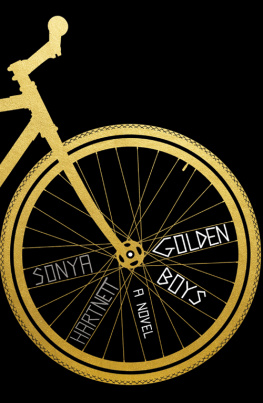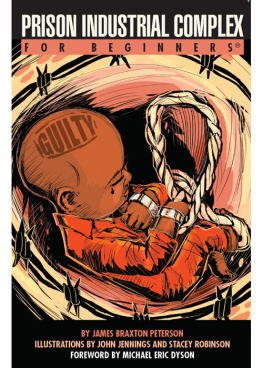Stephen John Hartnett - Challenging the Prison-Industrial Complex
Here you can read online Stephen John Hartnett - Challenging the Prison-Industrial Complex full text of the book (entire story) in english for free. Download pdf and epub, get meaning, cover and reviews about this ebook. year: 2010, publisher: University of Illinois Press, genre: Politics. Description of the work, (preface) as well as reviews are available. Best literature library LitArk.com created for fans of good reading and offers a wide selection of genres:
Romance novel
Science fiction
Adventure
Detective
Science
History
Home and family
Prose
Art
Politics
Computer
Non-fiction
Religion
Business
Children
Humor
Choose a favorite category and find really read worthwhile books. Enjoy immersion in the world of imagination, feel the emotions of the characters or learn something new for yourself, make an fascinating discovery.

- Book:Challenging the Prison-Industrial Complex
- Author:
- Publisher:University of Illinois Press
- Genre:
- Year:2010
- Rating:5 / 5
- Favourites:Add to favourites
- Your mark:
- 100
- 1
- 2
- 3
- 4
- 5
Challenging the Prison-Industrial Complex: summary, description and annotation
We offer to read an annotation, description, summary or preface (depends on what the author of the book "Challenging the Prison-Industrial Complex" wrote himself). If you haven't found the necessary information about the book — write in the comments, we will try to find it.
Challenging the Prison-Industrial Complex — read online for free the complete book (whole text) full work
Below is the text of the book, divided by pages. System saving the place of the last page read, allows you to conveniently read the book "Challenging the Prison-Industrial Complex" online for free, without having to search again every time where you left off. Put a bookmark, and you can go to the page where you finished reading at any time.
Font size:
Interval:
Bookmark:

of the University of Illinois
All rights reserved
Manufactured in the United States of America
 This book is printed on acid-free paper.
This book is printed on acid-free paper.Challenging the prison-industrial complex : activism, arts,
and educational alternatives / edited by Stephen John Hartnett.
Includes index.
ISBN 9780252035821 (cloth : alk. paper)
ISBN 9780252077708 (pbk. : alk. paper)
1. Prison-industrial complexUnited States.
2. ImprisonmentUnited States.
3. PrisonsUnited States.
I. Hartnett, Stephen J.
HV9471.C46 2011
365'.973dc22 2010024101
 z
z c for their support of the writing workshop in Denver, Colorado; and all the University of Illinois students who joined the writing workshop in Urbana, Illinois, including Sarah Franseen, Katie Healey, Justin Lensing, Jennifer Mussman, Sejal Patel, and Ashley Reibel. As these workshop facilitators and tutors will tell you, and as the poems printed here attest, our imprisoned neighbors are capable of producing poems full of unspeakable pain yet also inspiring beauty.
c for their support of the writing workshop in Denver, Colorado; and all the University of Illinois students who joined the writing workshop in Urbana, Illinois, including Sarah Franseen, Katie Healey, Justin Lensing, Jennifer Mussman, Sejal Patel, and Ashley Reibel. As these workshop facilitators and tutors will tell you, and as the poems printed here attest, our imprisoned neighbors are capable of producing poems full of unspeakable pain yet also inspiring beauty.Font size:
Interval:
Bookmark:
Similar books «Challenging the Prison-Industrial Complex»
Look at similar books to Challenging the Prison-Industrial Complex. We have selected literature similar in name and meaning in the hope of providing readers with more options to find new, interesting, not yet read works.
Discussion, reviews of the book Challenging the Prison-Industrial Complex and just readers' own opinions. Leave your comments, write what you think about the work, its meaning or the main characters. Specify what exactly you liked and what you didn't like, and why you think so.








